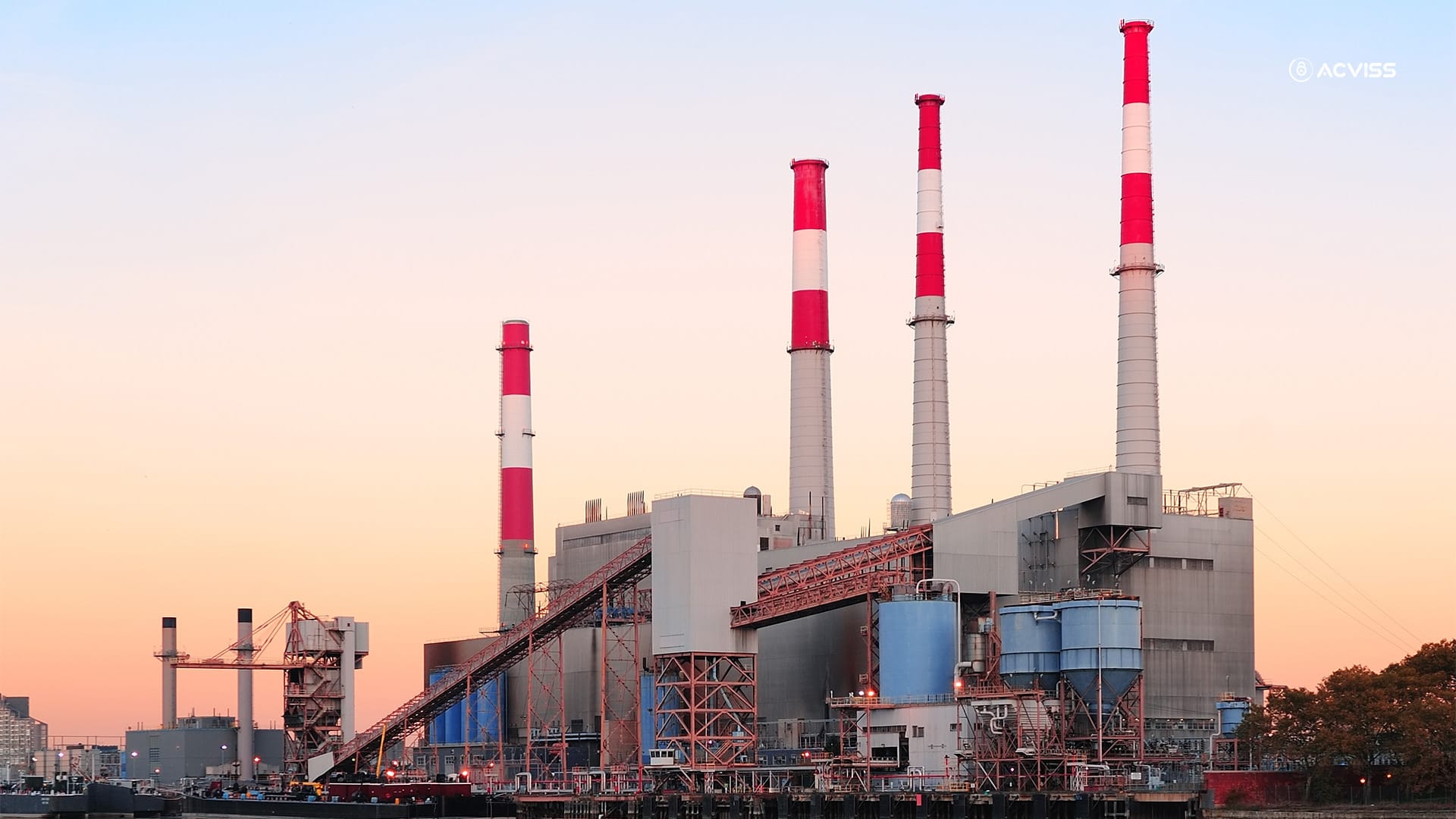Your Essential Checklist for Setting Up a New Factory

India is rapidly emerging as a global manufacturing hub thanks to favourable government policies, a young workforce, and technological advancements. Fueled by initiatives like ‘Make in India’ and production-linked incentives, the manufacturing sector has become India’s most prominent and fastest-growing economic sector. It contributed approximately 17% to India’s GDP in 2024, and this is projected to rise to 25% by 2030.
Is your career goal to set up a factory this year to tap into the lucrative manufacturing industry?
But you should know that commencing a factory requires huge financial and material resources, considerable time, substantial working and fixed capital. You might have to wait for the production process to complete and for your finished goods to be sold down to pay seed capital. In addition, you need to obtain several permits, factory licenses, and registrations to establish your dream project. Also, in this counterfeiting-dominant age, you can’t do without an effective brand protection strategy.
For long-term success, you need to properly plan and execute every step necessary for establishing a factory. This guide will provide a comprehensive checklist to help you navigate the process of setting up a new factory.
Why It's Beneficial to Set Up a New Factory in 2025?
You might have heard of multiple central and state incentive schemes encouraging individuals to set up a factory. But, establishing this venture can offer much more.
Strategic maritime routes connect India with many other nations, from Japan to the Middle East, making the country a regional distribution hub. Not only does India boast world-class export infrastructure, but it also supports the EXIM in major cities like Mumbai, Chennai, Ahmedabad, and others with more than 200 ports and 7500 km coastline.
So, entrepreneurs looking forward to setting up a factory in 2025 in India can avail of the following advantages:
- Growing Domestic Demand: India’s consumer base is expanding, driven by rising disposable incomes and urbanisation. Moreover, experts expect India to be the biggest consumer market by 2030. These days, consumers demand locally manufactured goods, which further offers manufacturers ample opportunities across sectors like FMCG, electronics, and automobiles.
- Government Incentives: Policies like PLI schemes and tax benefits for manufacturing investments help factory owners save substantially on the cost. Moreover, factories established in the Special Economic Zones (SEZs) and industrial corridors can seek high-end infrastructure and logistical support.
- Low Taxation Levels: The Indian government extended the 15% corporate concessional tax rate on new manufacturing units up to March 2024, and this concession is expected to continue in the coming year.
- Access to Skilled and Cost-Effective Labour: With India recruiting approximately 1.5 million engineers annually, you can easily have access to a technically proficient workforce, which makes setting up manufacturing units cost-effective. Also, compared to other nations, India is home to a low-cost workforce.
- Export Opportunities: As discussed above, India has a world-class export infrastructure. The country is positioning itself as a global supplier for manufacturing factories operating in varied sectors like electronics and textiles. Therefore, factory owners can enjoy impressive export opportunities under free trade agreements.
Manufacturing Business Checklist for 2025

Here listed are some factory planning essentials considering which you can seamlessly set up your manufacturing business in 2025:
- Location Selection: First and foremost, you should look for the appropriate location to establish your manufacturing factory. Choose an area with good connectivity, proximity to suppliers, and access to skilled labour. It’s advisable to set up the factory in SEZs to avail of tax, logistical, and infrastructure benefits.
- Obtain Necessary Licenses and Approvals: It’s not possible to legally set up your manufacturing factory without registering it and applying for necessary licenses and approvals.
- Financial Planning: Manufacturing factories demand huge working capital. So, try to secure adequate funding through loans, investors, or government grants. Before looking for funding options, consider creating a budget for land, machinery, labour, and operational costs to set a benchmark.
- Factory Layout Planning: The factory layout you plan should be optimised for the smooth, defect-free manufacturing process, safety, and efficiency. You don’t have to juggle with everything alone! Consider consulting with architects who specialise in industrial designs to create an optimal factory layout.
- Deploy Quality Control and Inventory Management Measures: The mantra for the long-term success of your manufacturing business is to manage inventory and maintain product standards. Implementing smart inventory tracking systems and developing robust quality control protocols are crucial to preventing stockouts, maintaining consistent production flow, and supplying genuine, defect-free products to consumers.
- Compliance with Labour Laws: Complying with appropriate labour laws has become compulsory for every industry, especially the manufacturing sector, where workers are exposed to hazardous working conditions. It’s your responsibility to ensure fair wages, safe working conditions, and adherence to labour regulations to foster a positive workplace environment.
Steps Involved in Setting Up a New Factory in 2025

Are you still confused as to how to establish your factory this year in India? This section outlined the steps essential for commencing a manufacturing factory in 2025:
1. Draft a Detailed Business and Financial Plan
A comprehensive business and financial plan is critical for obtaining investor confidence and regulatory approvals. You should have a clear idea of the products you want to manufacture and what your business objectives, production processes, expected output, and financial projections will be.
When it comes to financial planning, focus on details like initial setting up costs, ongoing costs, operational budgets, working capital requirements, and funding options.
To develop an appropriate business and financial plan, consider conducting thorough market research about customer needs, current manufacturing technology, sales strategies, production costs, and more.
2. Apply for Licenses and Registrations
Manufacturing factories in India are governed by multiple laws, such as the Factories Act of 1948, the Industrial Disputes Act of 1947, the Goods and Services Tax Act of 2017, and more.
It’s a must to navigate regulatory requirements to establish your factory legally. Register your factory under the right legal structure and with all the official authorities and bodies. Here’s the list of factory licenses and registrations you must secure:
- Apply for factory registration to the Regional Office of the Ministry of Micro, Small, and Medium Enterprises.
- Obtain Goods and Services Tax (GST) registration from India’s Excise and Customs Department.
- If considering exporting or importing goods, obtain the Import Export Code (IEC).
- Submit your building plans to the nearby Urban Development Authority or Municipal Corporation.
- Register with the local State Department of Labour.
- Register your factory’s trademark with the Indian Trademark Registry
- Secure a Boiler Operation certificate if needed.
- Obtain a fire safety certificate.
- Get your factory licensed from the Department of Industrial Policy and Promotion.
- Obtain an NOC for environmental clearance.
3. Procure Raw Materials, Machinery, and Equipment
You have set up the building to operate your manufacturing business. But you can’t manufacture without raw materials, machinery, and equipment.
Investing in the right raw materials, machinery, and equipment is vital to ensure high-quality output. Choose modern, energy-efficient machinery and equipment that meets your production requirements and aligns with your scalability goals.
4. Recruit and Train Staff
Building a skilled workforce is essential for efficient operations. The aim of your recruitment campaign should be to hire staff with the technical expertise required for your manufacturing business.
Moreover, provide them with adequate training to familiarise them with responsibilities, tasks, machinery, safety protocols, and quality control standards.
5. Run Pilot Production
Pilot production serves as a testing phase to identify and resolve potential bottlenecks in your manufacturing process. It’s usually time and cost-effective to produce a small batch of products to evaluate the efficiency of your machinery, workforce, and quality control measures.
By doing so, you can fine-tune your operations and address any issues before scaling up to full production.
6. Launch Full-Scale Production
Once all systems and processes are optimised, proceed with full-scale production. You should keep an eye on all key performance indicators like production efficiency, defect rates, and customer satisfaction to ensure continuous improvement.
Other than that, maintain robust quality control protocols and stay updated with industry trends to remain competitive.
Establishing a Factory: Importance of Anti-Counterfeiting Packaging and Inventory Tracking Measures

In the age of global trade and e-commerce, counterfeit products have become a significant threat for brands, even manufacturing businesses. The copies of products manufactured in genuine factories cause manufacturers to lose millions or billions, making implementing anti-counterfeit solutions necessary.
So, how can anti-counterfeit packaging and inventory tracking measures be helpful for manufacturing factories?
Why is Anti-Counterfeit Packaging Essential?
- Builds consumer trust by ensuring product authenticity.
- Help protect brand reputation.
- Prevents financial losses due to counterfeit goods.
How Inventory Tracking Enhances Efficiency?
- Real-Time Tracking: Know the exact status of raw materials and finished goods, facilitating optimal inventory management.
- Waste Reduction: Minimise production delays caused by inventory mismanagement.
- Enhanced Security: Prevent theft and ensure the proper movement of goods.
Summing up it all!
You can unlock doors to many opportunities by setting up a factory in 2025. It’s just that you need to approach it with a clear plan and the right resources. From securing your factory license to implementing robust inventory management, quality control, and anti-counterfeiting measures, your every effort plays a crucial role in building a successful venture.
Apart from this, you can’t do without an optional brand protection strategy, which most importantly involves deploying anti-counterfeit packaging and inventory tracking measures. By partnering with Acviss for solutions like Uniqolabel and Origin, you ensure your factory is equipped with cutting-edge technologies for anti-counterfeiting and inventory tracking.
